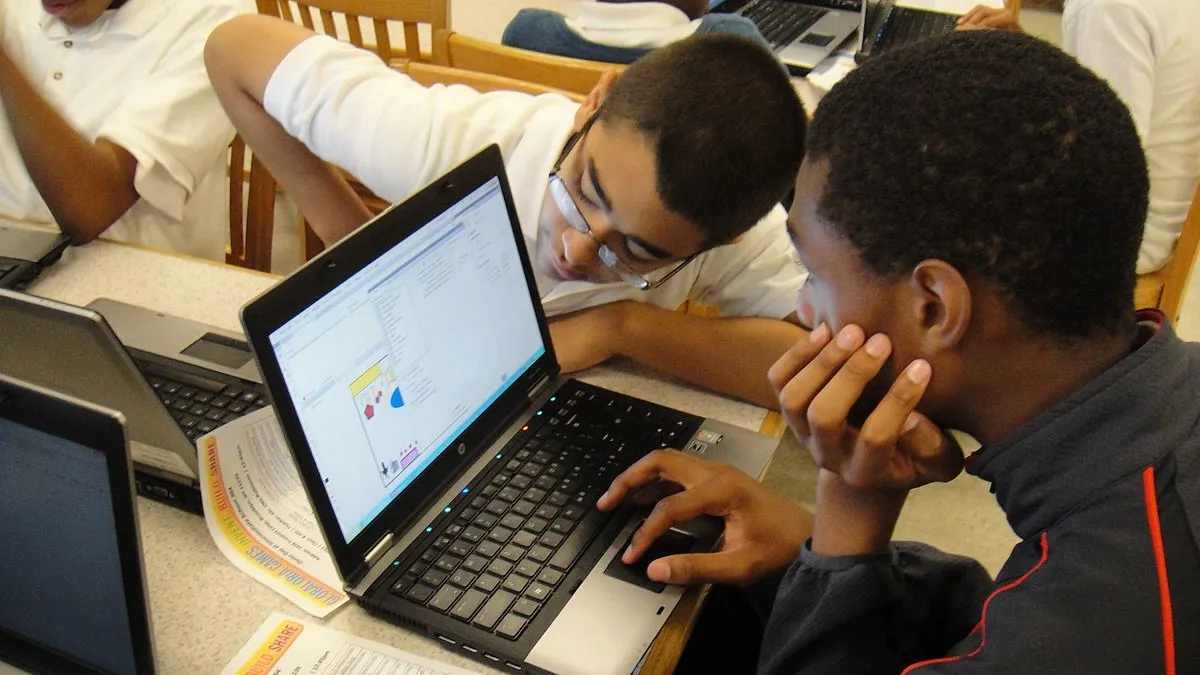Although it’s great for returning students who missed out on a high school diploma to earn an equivalency certificate, some U.S. community college leaders aim to help them find a pathway to a full-on career.
Bridge to College and Career is a unique program that not only prepares students to take the GED, or general equivalency exam, but offers specialized curriculum that integrates material from fields of interest, such as health or business, and academic support to help students navigate the world of college.
A study of two U.S. community colleges using the Bridge program shows these students are 20 percentage points more likely to complete GED classes and exams and to enroll in higher ed courses.
“We are very encouraged by what we have seen,” said Robert Ivry, senior vice president of the MDRC, a nonprofit social policy research group, which launched small but rigorous studies with both LaGuardia Community College of the City University of New York and Northeast Wisconsin College in Green Bay, Wis.
“This is GED with a purpose,” he said. “This makes career themes come alive through their learning.”
At both the larger metropolitan New York school and the smaller Midwestern college, researchers found Bridge students are far more likely to complete GED classes, take the exam and enter college than those in traditional GED classes, he said.
The LaGuardia program has been in place since 2007, but the MDRC helped NWTC develop curriculum and aids with monitoring student success. The school is about half way through a three-year partnership with the MDRC.
The research group felt it important to gauge success at two different types of schools, Ivry said, and partnered with NWTC after meeting administrators at a national conference.
“Is this unique to New York?” Ivry said. “We felt showing impacts from not only a New York, which as pretty high-functioning community schools, but also a smaller school with an active program was important.”
Nationally, less than 5 percent of those with a GED will earn a bachelor’s degree, compared with 33 percent of those with high school diplomas, according to the U.S. Census. Studies by the National Bureau of Economic Research show that although many GED students take the exam with the intention of gaining a post-secondary diploma, about 77 percent of GED holders do not go on beyond the first semester of college.
Those behind Bridge are hopeful the program gives students the support they need to stick with their studies.
“Many of our learners have some pretty significant challenges,” said Pam Gerstner, associate dean of general studies at Green Bay’s NWTC. “And student stories can change every week. Having them think about a career and having that extra support really makes a difference.”
In the past, NWTC offered an open lab setting for students to study for their GED but had no formal instruction. A 2014 overhaul made the tests more difficult, and the tech school began to offer classroom instruction to help students prepare. The classes are free of charge, although people must pay to take the GED.
The Bridge program, launched at NWTC in 2015, takes that a step further and tailors lessons specifically to prepare students to transition into certificate and associate degree programs. Students interested in a health career, for example, might go out and assess different insurance carriers to determine the best coverage, or look into the cost to attend college as part of a math assignment.
“GED is looked at as a pipeline,” Gerstner said. “The overall goal is to get them into a post-secondary program.”
Students were randomly chosen to be part of either regular GED prep students or those in the Bridge program.
Those in the bridge program work with a specialist who helps keep them motivated and helps keep them in school.
“They’re literally holding their hand through the whole process,” said Diane Shilka, supervisor in Adult Basic Education at NWTC. “Students also have access to all of our student services, there’s lots of opportunity to feel part of campus. We want them to not only feel successful in the classroom, but in school.”
Students meet with counselors and instructors in fields they would like to pursue. And so far, Gerstner and Shilka are pleased with results.
There are 304 students in the Wisconsin school’s study – 152 in the Bridge program and 152 in GED prep. About a third of the Bridge students have obtained their GED and 14 percent have moved into a post-secondary program. That compares to 14 percent of GED prep students who have earned a GED and 7 percent who have transitioned to a degree or certificate program.
NWTC administrators say they hope to continue the program once the MDRC support ends.
Ivry said such programs are vital as most jobs require some post-secondary education. And he suggests that schools partner with businesses to offer programming in areas that align with the local labor market.
“You want to pick areas where they can get a job,” Ivry noted. Providing students to spend time at a job site, even as GED students, also is important, he said.
Making the program a nationwide effort is a challenge, however, because states determine GED practices, with some hosted by K-12 systems, public libraries or two-year colleges.
“There’s a huge plus to having it at community colleges,” Ivry said. “There’s a psychological boost for students to have it at the college, and it makes for a more seamless transition. There’s a lot of variety in the 50 states, but this suggests value for having it at community colleges.”
















